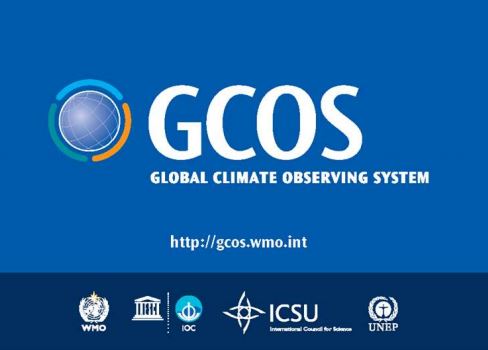The Final Report bythe Global Climate Observing System (GCOS) has been just released.GCOS is a joint undertaking of the World Meteorological Organization (WMO), the Intergovernmental Oceanographic Commission (IOC) of the United Nations Educational Scientific and Cultural Organization (UNESCO), the United Nations Environment Programme (UNEP) and the International Council for Science (ICSU), which goal is toprovide comprehensive information on the total climate system, involving a multidisciplinary range of physical, chemical and biological properties, and atmospheric, oceanic, hydrological, cryospheric and terrestrial processes.
The report entitled "Status of the Global Observing System for Climate" responds to an invitation by the Parties to the United Nations Framework Convention on Climate Change (UNFCCC) at the thirtythird session of the UNFCCC Subsidiary Body for Scientific and Technological Advice (SBSTA) in Cancún, Mexico, in 2010. The conclusions of SBSTA in subsequent years have reinforced the importance ascribed to such a status report. It has recently been completed under the overall guidance of the Global Climate Observing System (GCOS) Steering Committee with contributions from panel members and external experts. It was compiled and coordinated by the lead author, supported by the GCOS Secretariat.
Whitin the report, special attenion was given to permafrost and the extensive work behind GTN-P. "The Global Terrestrial Network for Permafrost (GTN-P), coordinated by the International Permafrost Association (IPA), forms a GCOS/GTOS baseline network for these variables. The GTN-P Data Management Group at the Arctic Portal (http://www.arcticportal.org/) and the Alfred Wegener Institute, Germany, maintains both borehole temperature and active-layer thickness metadata, and coordinates data management and dissemination. A network of GTN-P National Correspondents (NC) was established in 2013. 22 countries nominated a total of 32 NCs. Early in 2015 the GTN-P Database (gtnpdatabase.org; Biskaborn et al., 2015) contained metadata for 1074 boreholes and 274 active-layer monitoring sites".
After 3 years of extensive work, selected results from GTN-P have been presented on two videos, Thermal state of permafros and Active layer thawing.
Download the full Report here.

